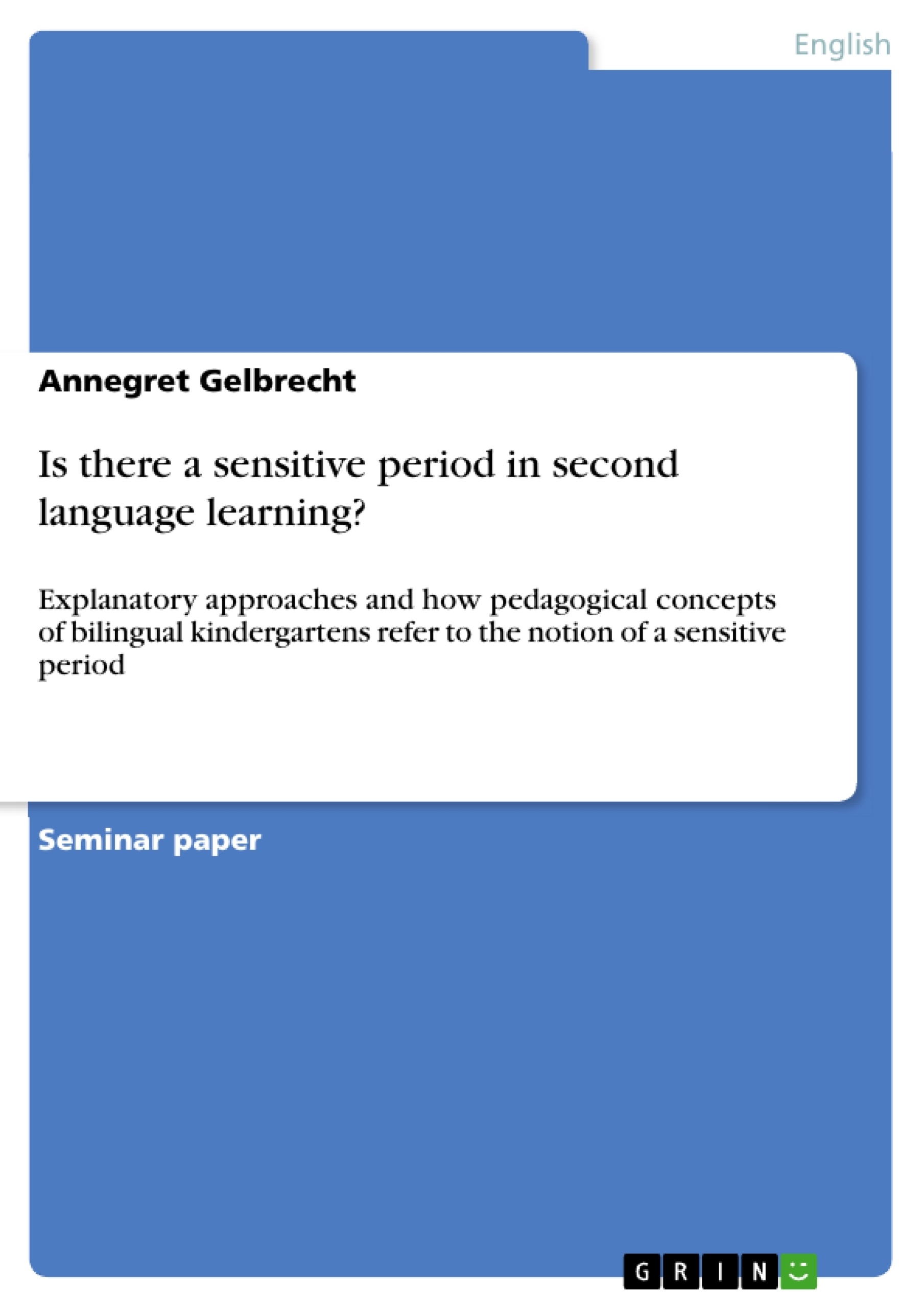‘A tree must be bent while it is young.’ (Proverb)
Proverbs usually have an element of truth. The German speakers will certainly also know the German equivalent ‘Was Hänschen nicht lernt, lernt Hans nimmermehr.’ Do these proverbs also apply to the acquisition of a second language? Are young learners trees that ‘must be bent’ before they are too old to reach a certain language proficiency?
In first and second language research, the concept of a ‘critical period’ respectively of a ‘sensitive period’ was developed to explain probable advantages of children in the process of language acquisition. The aim of this term paper is to find out whether there is a sensitive period for second language learning and to explore possible explanatory approaches.
Within this research, the ‘Critical Period Hypothesis’ (CPH) represents the major focus. According to this hypothesis, “there is a period during which language acquisition is easy and complete (i.e. native-speaker ability is achieved) and beyond which it is difficult and typically incomplete” (ELLIS, 1997: 67). This means, it is assumed that language learners must begin at an early age to learn a language in order to reach native-like proficiency.
Generally, empirical data from course books, handbook articles and journal articles as well as commentaries by different authors are used in order to follow the research question up. First, a framework concerning the origins of the idea of a sensitive period from first language acquisition, and the clarification of particular terms will be created. Then, the distinction between possible advantages of young learners in natural as well as instructional settings will be of interest.
The findings on a critical or sensitive period have also found their ways into the pedagogical practice. It is obvious that especially bilingual kindergartens, that promote an early start in language learning in general, will somehow refer to the idea of a sensitive period in second language acquisition. Therefore, the second part of this term paper will present an analysis of pedagogical concepts of these kinds of day care institutions with respect to the integration of this idea. Website information of different bilingual kindergartens will serve as sources.
Table of contents
List of abbreviations
List of figures
1 Introduction
2 The origins of the notion of a sensitive period in second language acquisition
3 Selected studies on the Critical and Sensitive Period Hypothesis In second language acquisition
3.1 Delimitation of terms
3.1.1 Critical versus sensitive period
3.1.2 Initial learning rate versus ultimate attainment
3.2 The sensitive period in natural settings
3.2.1 Empirical results
3.2.2 Explanatory approaches
3.3 The sensitive period in instructional settings
4 The notion of a sensitive period in pedagogical concepts of bilingual kindergartens
4.1 Method
4.2 Results of the Analysis
5 Conclusion
Bibliography
Appendix
- Quote paper
- Annegret Gelbrecht (Author), 2011, Is there a sensitive period in second language learning?, Munich, GRIN Verlag, https://www.grin.com/document/177551
-

-

-

-
Upload your own papers! Earn money and win an iPhone X. -

-
Upload your own papers! Earn money and win an iPhone X. -

-
Upload your own papers! Earn money and win an iPhone X. -

-
Upload your own papers! Earn money and win an iPhone X. -

-
Upload your own papers! Earn money and win an iPhone X. -

-
Upload your own papers! Earn money and win an iPhone X. -

-
Upload your own papers! Earn money and win an iPhone X. -

-
Upload your own papers! Earn money and win an iPhone X. -

-
Upload your own papers! Earn money and win an iPhone X.

